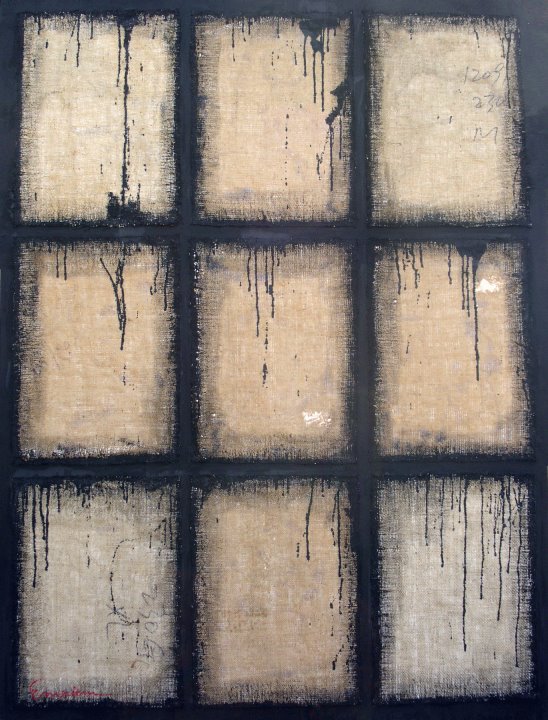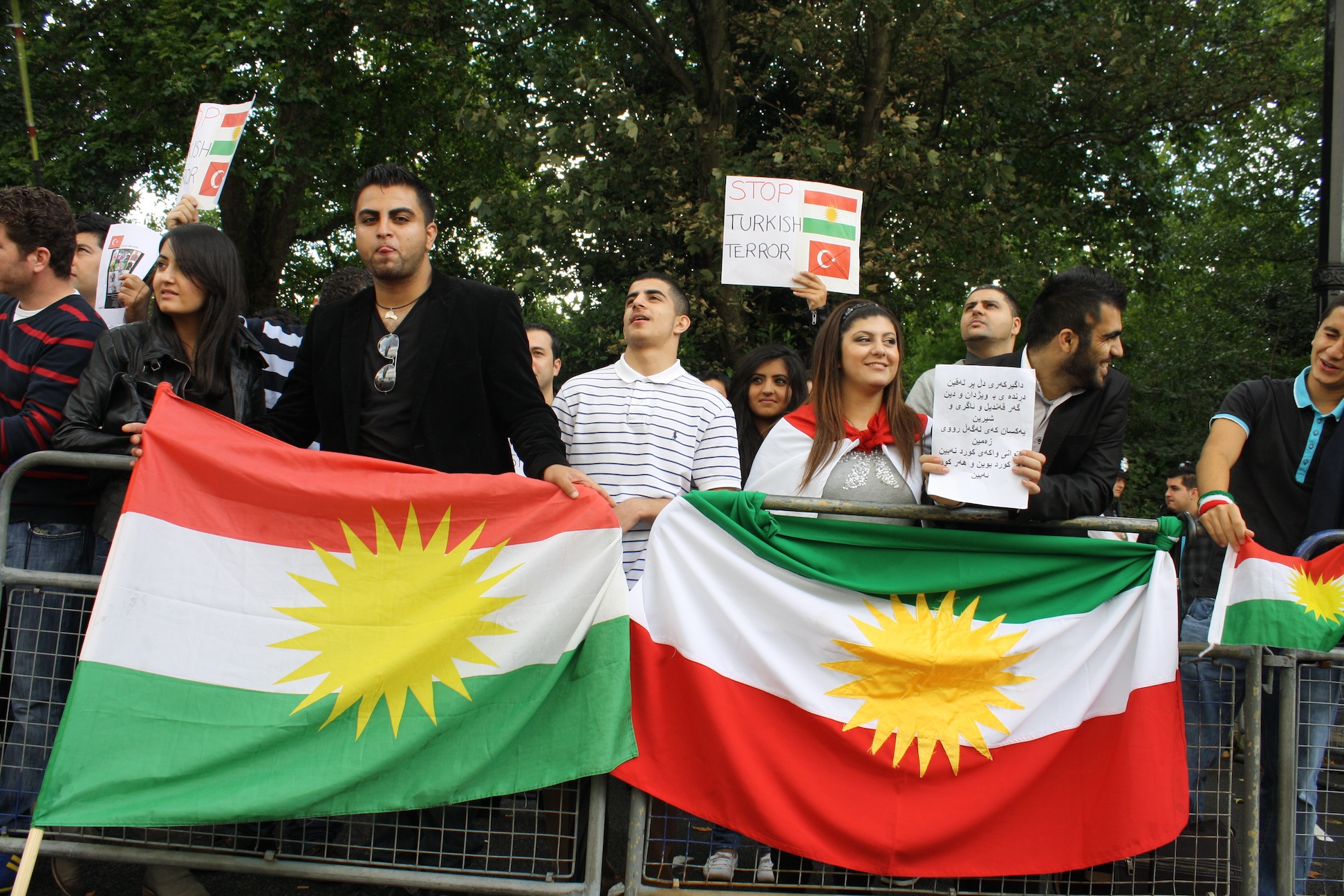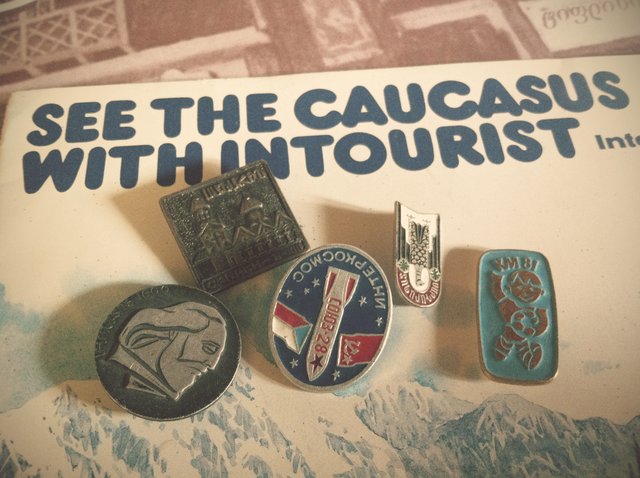A Campaign Against Death By Stoning in Iran
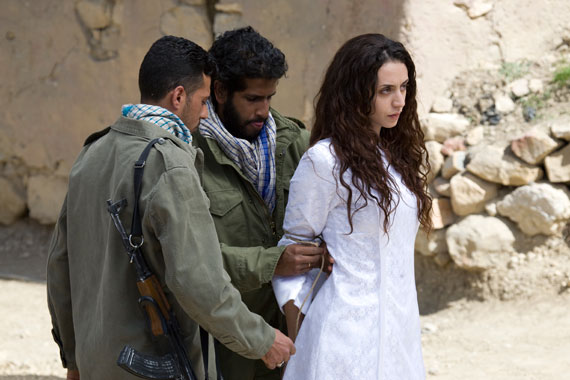

A still from the film, "The Stoning of Soraya M," which is based on a true story of a stoning death in Iran
More than a year after Sakineh Mohammadi Ashtiani’s stoning sentence on account of adultery was suspended, international groups are campaigning to influence the Iranian governments decision to remove the barbaric practice from the country’s penal code.
Amnesty International, an organization that draws attention to human rights abuses is urging the signing of a petition that urges the Supreme Leader of the Islamic Republic of Iran, Ayotallah Sayed ‘Ali Khamanei to remove stoning from the Iranian penal code. The letter urges a current draft law that is now before the Islamic Consultative Assembly for approval to ensure that any legislation passed “is in line with Iran’s obligations under international law, so that no one in Iran risks the death penalty for having consensual sexual relations between adults in private.” The draft does not include a clause on the stoning of men and women convicted of ‘adultery whilst married.’
The current Iranian Penal Code [PDF], ratified in 1991, outlines stoning in Article 83:
Adultery in the following cases shall be punishable by stoning: (1) Adultery by a married man who
is wedded to a permanent wife with whom he has had intercourse and may have intercourse when he so desires; (2) Adultery of a married woman with an adult man provided the woman is permanently married and has had intercourse with her husband and is able to do so again.
In Chapter 4, the quality of punishment is outlined:
Article 100: The flogging of an adulterer shall be carried out while he is standing upright and his body bare
except for his genitals. The lashes shall strike all parts of his body–- except his face, head and genitals– with
full force. The adulteress shall be flogged while she is seated and her clothing tightly bound to her body.Article 102: The stoning of an adulterer or adulteress shall be carried out while each is placed in a hole and
covered with soil, he up to his waist and she up to a line above her breasts.
Last year, Canadian news outlet, the National Post put out a graphic of how exactly stoning is carried out. Amnesty International is now using the illustrations in its campaign:
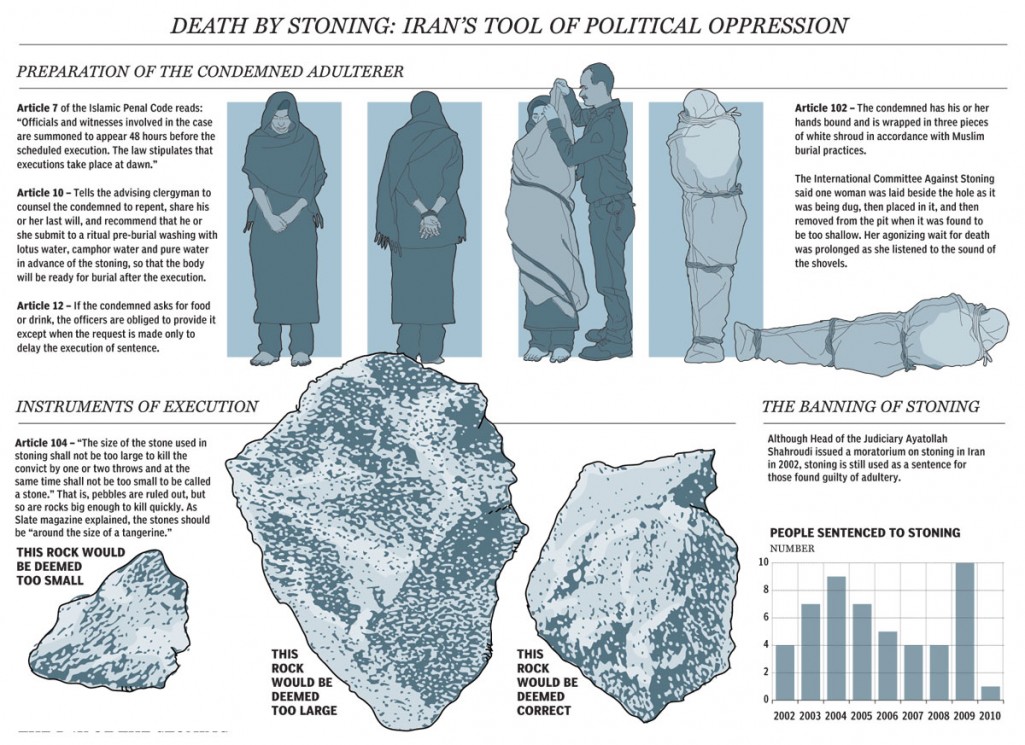
Amnesty International reports that it knows of at least six people who have been stoned to death since 2002, although a moratorium was declared on stoning the same year. The International Covenant on Civil and Political Rights, which Iran is a part of, advocates the right to life and the prohibition of torture, cruel, inhuman or degrading treatment or punishment – a covenant which Amnesty says Iran is violating.
While stoning is a debated issue among Muslim religious clerics, many have spoken out against the practice and deemed it “un-Islamic,” according to Violence is Not Our Culture (VNC), an international network of organizations committed to ending discrimination and violence against women. VNC also sites that Iranian clerics have spoken out against the practice while others site the Hadith, the acts and sayings of the Prophet Muhammad when discussing the legitimacy of stoning.
The 2010 international film, “The Stoning of Soraya M,” portrayed the true story of Soraya, who was stoned to death in Iran 30 years earlier.
Currently, stoning is used as a form of punishment in Saudi Arabia, United Arab Emirates, Yemen, Iran, Pakistan, Sudan and Nigeria.

